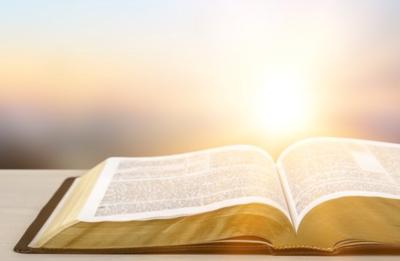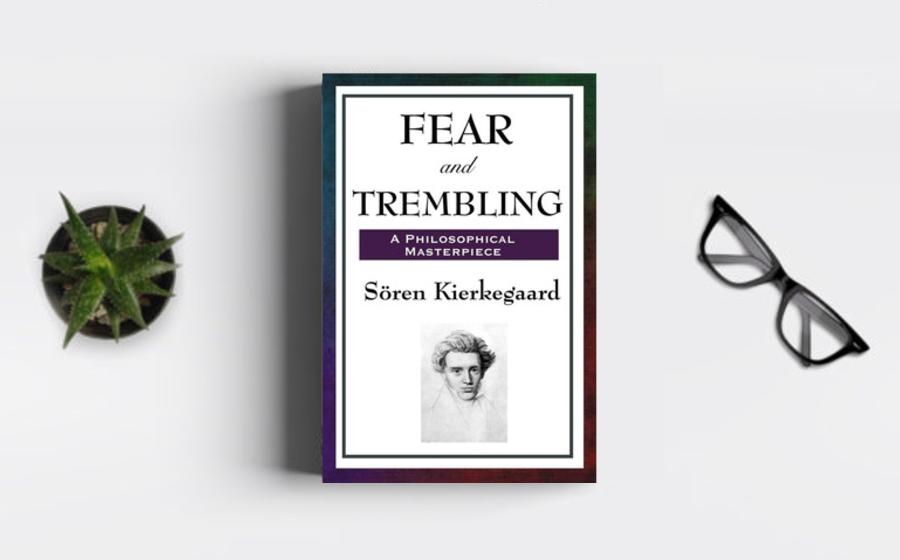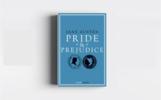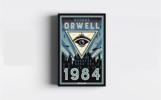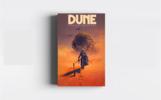"Fear and Trembling" emerges as a profound
exploration of faith, ethics, and the human condition.
As we traverse the pages of this philosophical
masterpiece, it becomes evident that "Fear and
Trembling" is not merely a treatise on religious
philosophy; it is a complex labyrinth of thought that
delves into the depths of existential angst, moral
paradoxes, and the enigma of faith. This work earns its
esteemed place among the top books of all time, offering
readers a contemplative journey through the complexities
of the ethical abyss
At
the heart of "Fear and Trembling" lies Kierkegaard's
exploration of the biblical story of Abraham and
Isaac, an exploration that unveils the complexities of
faith, duty, and the ethical implications of religious
commitment. In a manner reminiscent of literary quests
that challenge characters to confront moral dilemmas,
Kierkegaard's philosophical narrative becomes a thematic
tapestry that invites readers to grapple with the
paradoxes inherent in the human experience.
In
the tradition of literary quests that lead characters
through intricate labyrinths, Kierkegaard's exploration
of Abraham's dilemma becomes a philosophical journey, an
odyssey that propels readers into the rich tapestry of
existential contemplation. "Fear and Trembling"
transforms into a philosophical epic, where the story of
Abraham becomes a thematic motif that sets the stage for
an exploration of faith, morality, and the profound
complexities of the human soul. Kierkegaard's narrative
becomes a philosophical tapestry, weaving together
threads of existential anxiety, religious commitment,
and the enigma of ethical responsibility.
Kierkegaard introduces the concept of the
teleological suspension of the ethical, an idea embodied
in Abraham's willingness to sacrifice his son Isaac as
an act of faith. In the tradition of literary plots that
hinge on ethical dilemmas, Kierkegaard's exploration
becomes a thematic undercurrent that defines the
philosophical landscape of "Fear and Trembling." The
ethical paradox of sacrificing the ethical for the sake
of faith becomes a narrative device, inviting readers to
reflect on the profound tension between moral duty and
religious commitment.
The teleological suspension
of the ethical becomes a philosophical motif that
resonates with the literary tradition of exploring
ethical quandaries. Kierkegaard's insights add layers of
meaning to the text, transforming "Fear and Trembling"
into a philosophical novel where Abraham's dilemma
becomes a central theme. Readers are prompted to
contemplate the nature of ethical responsibility and the
complexities of faith that transcend conventional moral
frameworks.
Kierkegaard
introduces the concept of the knight of faith, a figure
who embodies the teleological suspension of the ethical
while maintaining a profound religious commitment. In
the tradition of literary archetypes that represent
spiritual journeys, the knight of faith becomes a
thematic thread that runs through "Fear and Trembling."
The aesthetic resignation required for the leap of faith
becomes a narrative device, inviting readers to reflect
on the transformative nature of religious commitment and
the existential dimensions of the human spirit.
The knight of faith becomes a philosophical narrative
that resonates with the literary tradition of exploring
spiritual quests. Kierkegaard's exploration adds depth
to the text, transforming "Fear and Trembling" into a
philosophical novel where the knight of faith becomes a
central theme. Readers are encouraged to contemplate the
nature of religious commitment and the profound
metamorphosis that occurs when an individual embraces
the existential dimensions of faith.
Kierkegaard introduces the concept of the tragic
hero, a figure who remains within the aesthetic and
ethical realms, unable to make the leap of faith. In the
tradition of literary tragedies that explore the flaws
of protagonists, the tragic hero becomes a thematic
tapestry that weaves through "Fear and Trembling." The
inability to transcend aesthetic and ethical categories
becomes a narrative device, inviting readers to reflect
on the limitations of tragic existence and the inherent
struggles of the human condition.
The tragic hero
becomes a philosophical motif that resonates with the
literary tradition of portraying flawed protagonists.
Kierkegaard's exploration adds a layer of complexity to
the text, transforming "Fear and Trembling" into a
philosophical novel where the tragic hero becomes a
central theme. Readers are prompted to contemplate the
challenges of existential existence and the profound
implications of remaining within the confines of
aesthetic and ethical paradigms.
Kierkegaard
grapples with the tension between the ethical and the
religious, an existential dilemma that defines the human
experience. In the tradition of literary narratives that
explore the complexities of existence, Kierkegaard's
examination becomes a thematic undercurrent that shapes
the philosophical landscape of "Fear and Trembling." The
inherent conflict between ethical duty and religious
commitment becomes a narrative device, inviting readers
to reflect on the existential tensions that permeate
human existence.
The tension between the ethical
and the religious becomes a philosophical narrative that
resonates with the literary tradition of portraying the
struggles of characters caught in existential dilemmas.
Kierkegaard's insights add layers of meaning to the
text, transforming "Fear and Trembling" into a
philosophical novel where the tension of existence
becomes a central theme. Readers are encouraged to
contemplate the profound challenges of navigating the
ethical and the religious dimensions of life.
Kierkegaard delves into the concept
of existential anxiety, an abyss of individual
subjectivity that arises from the tension between the
ethical and the religious. In the tradition of literary
motifs that explore the depths of individual
consciousness, Kierkegaard's exploration becomes a
thematic tapestry that weaves through "Fear and
Trembling." Existential anxiety becomes a narrative
device, inviting readers to reflect on the profound
depths of individual subjectivity and the existential
angst that accompanies the search for meaning.
Existential anxiety becomes a philosophical motif that
resonates with the literary tradition of portraying the
inner turmoil of characters. Kierkegaard's exploration
adds a layer of complexity to the text, transforming
"Fear and Trembling" into a philosophical novel where
existential anxiety becomes a central theme. Readers are
prompted to contemplate the depths of their own
subjectivity and the existential challenges inherent in
the quest for understanding and faith.
It becomes evident that Soren Kierkegaard's philosophical opus is more than a theoretical treatise; it is a symphony of existential inquiry that harmonizes the concepts of faith, the teleological suspension of the ethical, the knight of faith, the tragic hero, the tension between the ethical and the religious, and existential anxiety.
